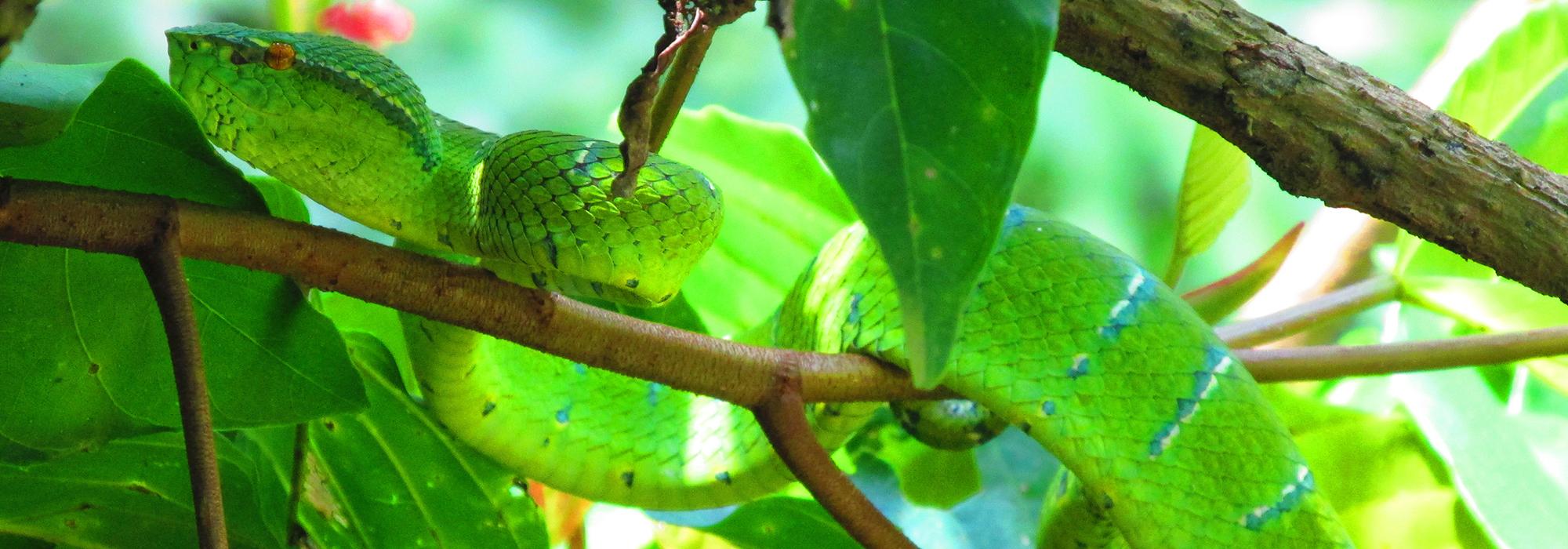
Report: Ten days in the Malaysian Bornean rainforest, August-September 2018
A Gerry Grimstone Travel Award paid the majority of the costs associated with Biological Sciences undergraduate Henry Grub's month-long trip to Southeast Asia during August & September 2018.
Sir Gerry’s travel award paid the majority of the costs associated with my month-long trip to Southeast Asia during August-September 2018.
The main purpose of this trip was to attend one of the third-year options in my Biological Sciences BA: 'Tropical Rainforest Ecology'. This option was a ten-day field trip in the Malaysian Bornean rainforest, rather than a lecture series in Oxford. However, since the island of Borneo is quite far away, I proposed, along with two other Mertonians also attending the option, to additionally visit Hong Kong and Singapore, and extend the trip to a month in duration.
First we flew to Hong Kong, where we were interested primarily in exploring the city and the culture of this unique territory, in a unique time in its history. First, we spent two days on Lantau Island, where we explored the still quite rural parts of Hong Kong. This was before moving to the Hong Kong mainland, where we spent five days. Here I was able to explore various significant historical and cultural sites in Hong Kong, including the Thousand Buddhas Temple site, perched on a hillside overlooking the Sha Tin district, and the Nan Lian Gardens. I also explored some of the old colonial sites on Hong Kong Island, in the Central district, such as the ‘Blue House’ and Pottinger Street, as well as the extraordinary Mid-Levels Escalators. We took the funicular railway up Victoria Peak, where we got an excellent view over the main area of Hong Kong, before returning to explore its various street markets. I was most interested to get a feel for the city, and to see how it combined western and Chinese cultures, which was fascinating to observe.
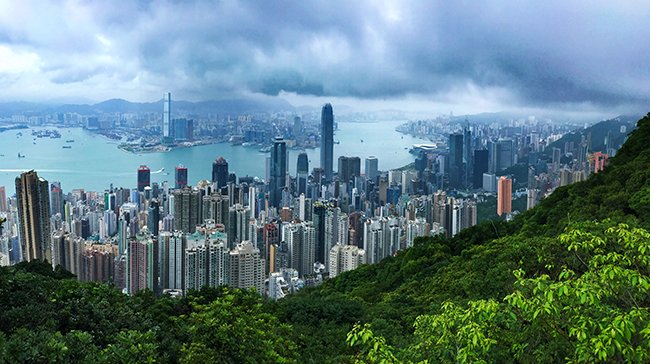
We then flew to Kota Kinabalu, the capital of Sabah, a state of Malaysia, on the island of Borneo. Before the field trip officially started we had three days in the city. We took a boat out to the islands off the coast of the city, which are part of a National Marine Park. Here we got to have a look at the pristine beaches and got a taste of the jungle that was to come – although we also got to observe the impact of tourists on the islands. We then took an excursion to a mangrove forest around 90 minutes outside the city, where we took a river tour to glimpse the endemic Proboscis monkeys and see the firefly displays when the sun set.
Then the field trip begun with an internal flight to Lahad Datu, a small town on the other side of the state, followed by a bumpy two-hour drive into the deep rainforest – to the remote Danum Valley Conservation Area; the field station of which acted as our main base. In the valley there are still large sections of undisturbed primary rainforest remaining.
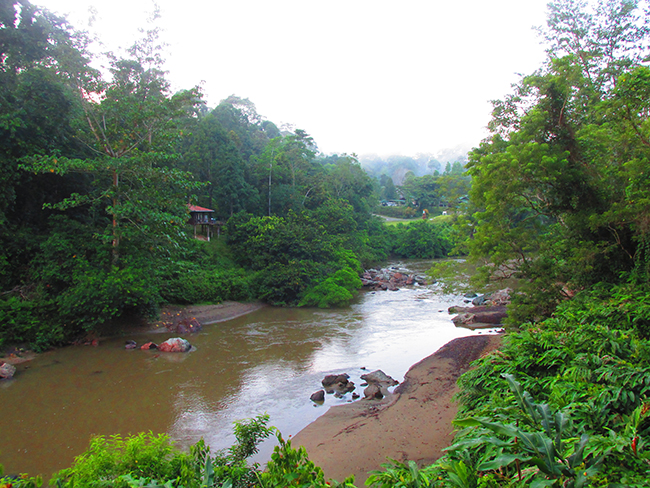
For the actual field trip, run by members of staff from the University’s Department of Zoology, we first rotated around the different themes. On day one, my group had an introduction to the rainforest, and went on a tough trek in the rain to get used to the terrain. We then had an introduction to the role of dung beetles and set up some traps.
The next day we were up early, to go mist netting, i.e. trapping some of the forest’s birdlife. We were able to observe, in the hand, some of the smaller birds of the rainforest, including the Little Spiderhunter and a Chestnut-capped Babbler.
On the third day we were looking at Lepidoptera – so we went to collect butterflies from the rainforest and trapped some moths at night using a powerful lamp – some of the specimens we killed so that we could practice pinning the insects for our tutor’s collection. It was on this day when we saw our first wild orangutan – the ultimate prize for visiting this part of the world! It was a young male who spent around ten minutes checking our group out; he was clearly intrigued! It was undoubtedly the highlight of the whole trip, but also very emotional to see the animal in the flesh. It brought home all the previous messages about the destruction of the rainforest: one of the main reasons we were there in the first place.
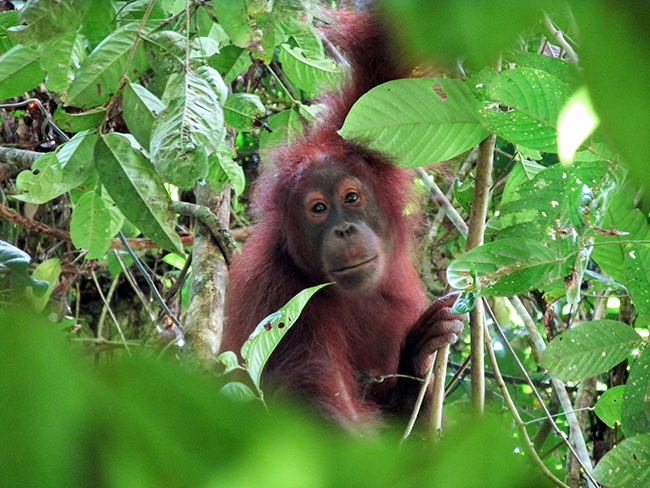
On the fourth day we visited one of the tutor’s experimental plots, in order to measure the progress of planted trees as part of a long-term ecology experiment – the data we collected will be used for his research papers.
On the fifth and final day of rotations we returned to the dung beetles, to see what our traps had caught. We killed most of the beetles so that we could take them back to the laboratory and examine them under a microscope, in order to be able to identify the species we had trapped. We may have even discovered a new species – but it is hard to be certain because these beetles are very understudied. We also saw two further orangutans! On these rotation days we had a tutorial in the jungle field station as part of the option – it made quite a change to get essay feedback in this location as supposed to an Oxford office!
We then had two break days: the first of which we took a trek to a waterfall a few kilometres away, were we got to swim in the river there. On the second day, we took a ‘tour’ of the area around the Valley. We got up before dawn to watch the sunrise from the top of a nearby peak (although it was cloudy…) and then we took the cars out to visit the Sabah Biodiversity Experiment and a nursery growing new Dipterocarp trees for planting.
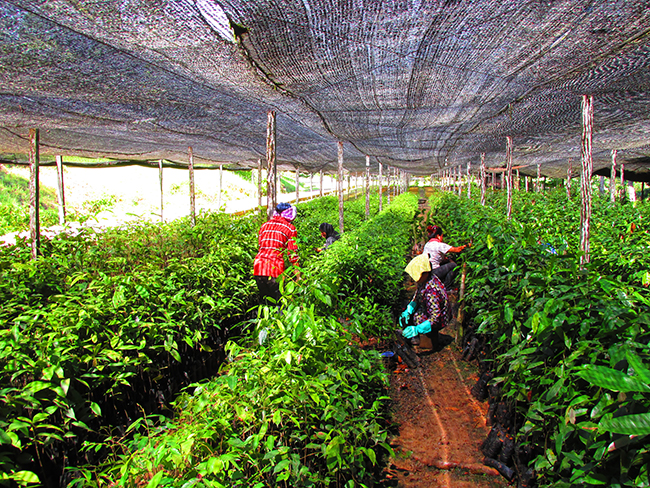
We also visited secondary rainforest to see the impact of logging, and a palm oil plantation to see the most infamous reason for the destruction of the rainforests. But the highlight was when we returned from the tour day: the road was blocked by a herd of very elusive Bornean pygmy elephants – it was a massive treat to see them!
We then spent the final two days of the trip conducting our own mini-research projects: I investigated the difference in bird species composition and diversity in primary vs. secondary rainforest with a fellow Mertonian.
When we returned from the jungle, myself and one other Mertonian took a diverted route home, via Singapore for five days. I was particularly interested in seeing how Singapore compared with Hong Kong, both being big westernised cities in Southeast Asia. I was surprised to find out just how different they were: I must say I much preferred Singapore and would love to go back! While there we explored the Botanic Gardens, which felt surprisingly familiar, and then toured the Marina district of the city-state, where we visited iconic landmarks such as Raffles Place and Marina Bay Sands. We also visited some of the cultural districts of Singapore, such as Chinatown and Little India, and ate at some of the fantastic Hawker markets – that was quite an experience!
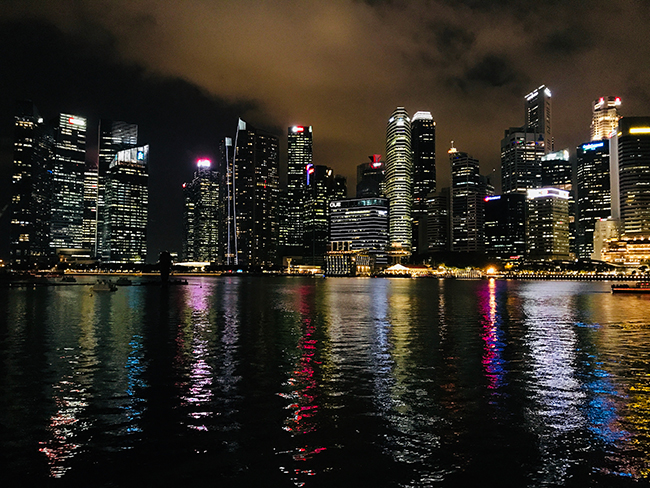
Overall, the whole month was immensely enjoyable and wonderfully varied. I had never been to Asia before, so it was a totally new experience, but confirmed my love for travelling and observing new and varied cultures. From the hustle, bustle and effective chaos of Hong Kong, to the heat and intensity of the jungle, to the clean modernity and greenery of Singapore, it was a brilliant trip. As a biologist, it was an invaluable opportunity to visit the rainforest, and be shown around by leading tutors in this field; and to see, in the wild, the animals that we as conservationists are fighting to save, was almost a rite of passage and I appreciated it immensely. And then as a ‘tourist’ I found the extra trips to Hong Kong, Kota Kinabalu and Singapore great fun and quite the experience. I will be examined on the content from the rainforest option in my FHS exams during Trinity Term 2019.
Sir Gerry’s award made this whole trip possible, as it was not cheap to do, and I am very grateful for his support, as he has allowed me to spend a month of the summer vac in a way I could only have dreamed of!